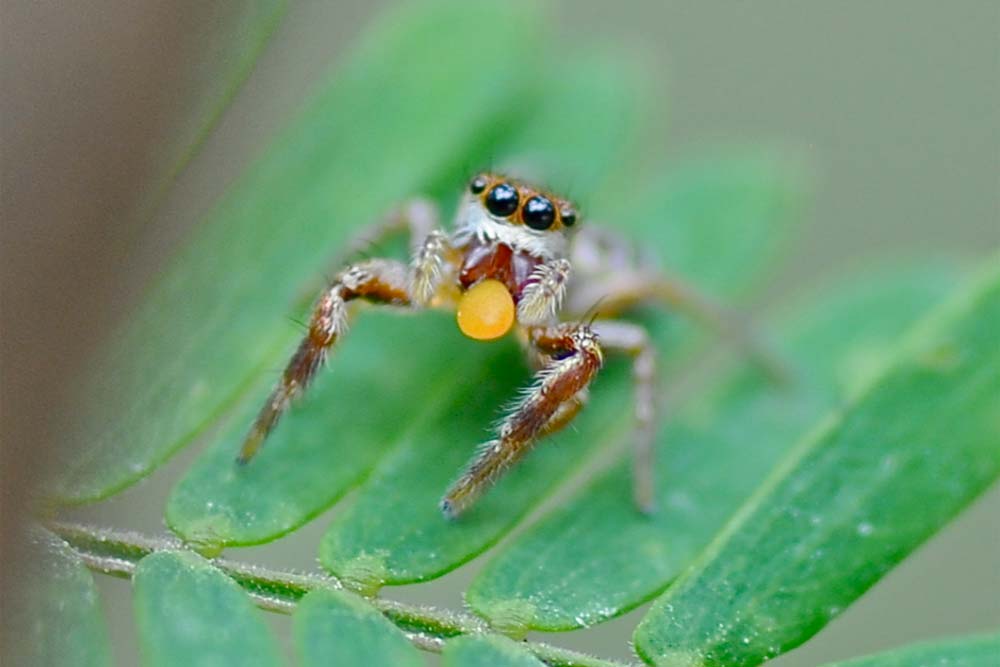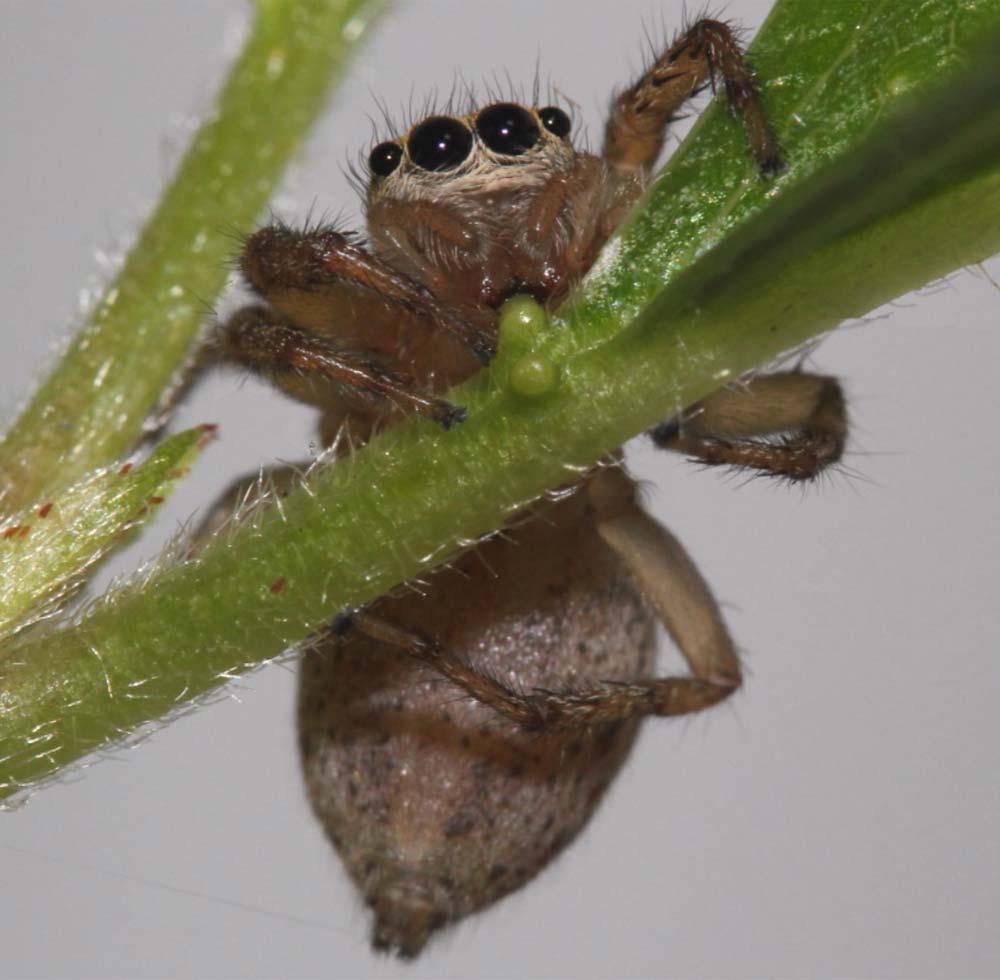Spider Snacks: Photos of Plant-Eating Arachnids
Specialized diet

A juvenile Bagheera kiplingi spider eats a Beltian body on a bullhorn acacia in Akumal, Mexico. Beltian bodies are one of the few solid plant foods that spider digest and ingest. B. kiplingi spiders have specialized to eat almost exclusively Beltian bodies, but laboratory studies suggest they need some insect protein in order to survive, molt and grow in the long term.
Nectar drinker

A female jumping spider Maevia inclemens drinks nectar from a shrub in South Carolina. Jumping spiders can be identified by their large pair of eyes, flanked by three smaller pairs.
Upside-down eater

A male jumping spider (Hentzia mitrata) drinks nectar from a shrub nectary. Researchers aren't sure how important plant foods are to a spider's overall diet, but having diverse food options probably helps spiders to survive when insect prey is scarce, researcher Martin Nyffeler and colleagues wrote in a review in The Journal of Arachnology.
Searching for nectar

A male jumping spider (top) and a female jumping spider (bottom) eat nectar from a shrub in South Carolina. Both spiders are of the species Pelegrina galathea. Jumping spiders actively wander over plants and seek out nectaries, which are full of energy-rich, sugary liquid.
Colorful jumping spider

A Sassacus papenhoei jumping spider with a jewel-like abdomen feeds on nectar in South Carolina. Jumping spiders represent about 60 percent of reported incidents of plant-eating, but other groups such as nocturnal running spiders have been seen feeding on plant products, too. More study is needed to understand how spiders incorporate plants in their diet, researchers wrote in The Journal of Arachnology.
Follow Stephanie Pappas on Twitter and Google+. Follow us @livescience, Facebook & Google+.
Get the world’s most fascinating discoveries delivered straight to your inbox.

Stephanie Pappas is a contributing writer for Live Science, covering topics ranging from geoscience to archaeology to the human brain and behavior. She was previously a senior writer for Live Science but is now a freelancer based in Denver, Colorado, and regularly contributes to Scientific American and The Monitor, the monthly magazine of the American Psychological Association. Stephanie received a bachelor's degree in psychology from the University of South Carolina and a graduate certificate in science communication from the University of California, Santa Cruz.


